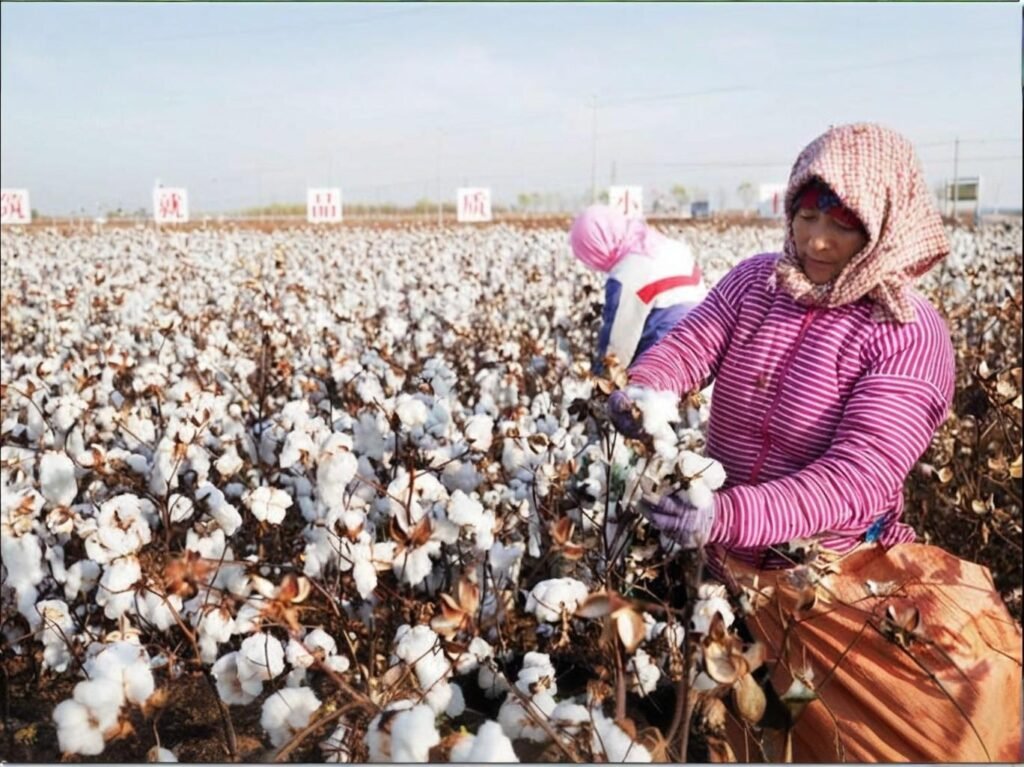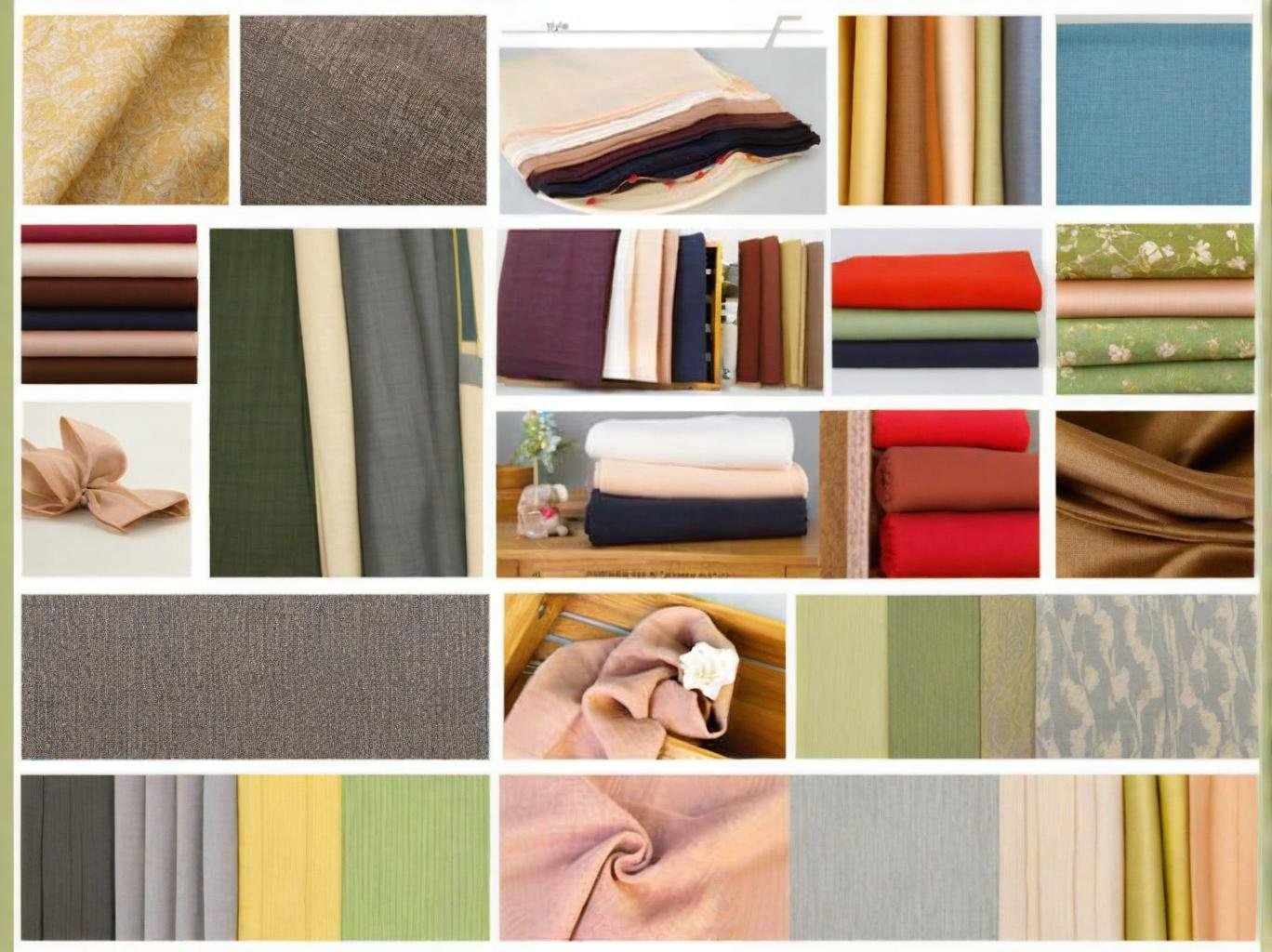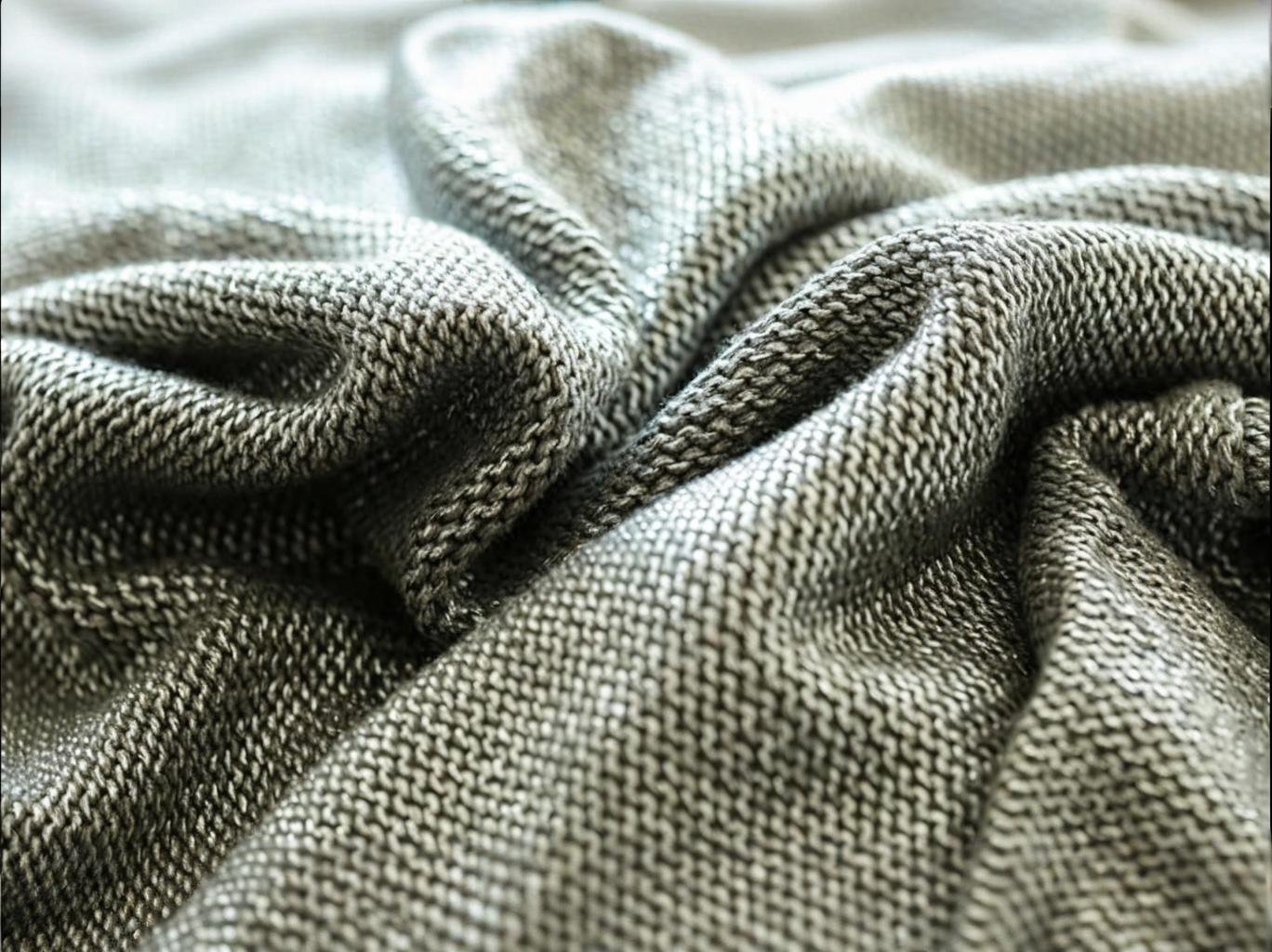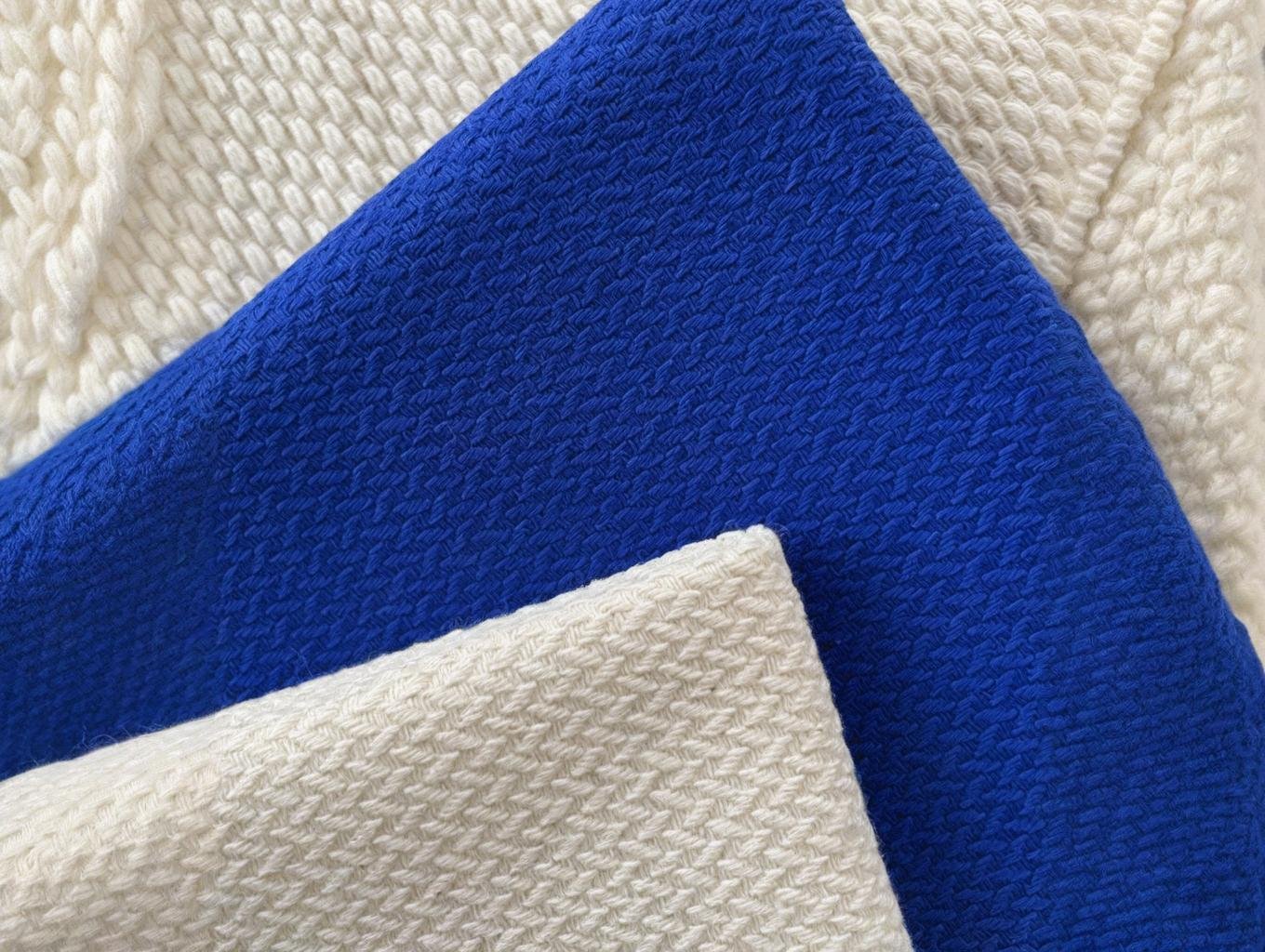What are the four types of cotton?

Cotton may seem like a simple, everyday fabric, but behind that T-shirt or bedding set lies a rich world of fiber science, farming regions, and textile engineering. For B2B buyers, manufacturers, and sourcing agents, knowing the differences between the four major types of cotton—Upland, Egyptian, Pima, and Organic—can mean the difference between a cost-effective product and a premium offering that justifies a higher margin. The four types of cotton are Upland, Egyptian, Pima, and Organic. Each differs in fiber length, softness, durability, and sustainability profile. Upland cotton is the most common and affordable, while Egyptian and Pima are long-staple luxury varieties. Organic cotton is valued for its eco-friendly cultivation.
While all cotton may look similar once woven, the journey from field to fabric is highly specialized. From the deserts of Egypt to the cotton plains of the American Southwest, different growing environments, harvesting methods, and finishing processes create vastly different outcomes in feel, function, and cost.
Let’s explore these cotton types one by one, starting with how and why this classification even exists.
1. What defines the classification of cotton into four main types?
Cotton is classified into four main types based on staple length, region of cultivation, plant variety, and processing standards. These classifications aren’t just academic—they directly influence the fabric’s softness, durability, moisture absorption, and price.
Understanding the Scientific and Market-Based Classification
A. Genetic Differences in Cotton Varieties
| Cotton Type | Scientific Name | Staple Length | Region of Growth |
|---|---|---|---|
| Upland | Gossypium hirsutum | Short/Medium (20–29mm) | Global – esp. USA, China, India |
| Egyptian | Gossypium barbadense | Extra-Long (≥34mm) | Nile Delta |
| Pima | Gossypium barbadense | Extra-Long (≥34mm) | USA, Peru |
| Organic | Any (mostly G. hirsutum) | Varies – certified | Global – eco-farms |
Pima and Egyptian cotton are the same species, but their terroir (environmental growing conditions) makes a big difference in fiber texture and consistency.
B. Staple Length Drives Fabric Performance
Staple length refers to the length of the individual fibers. Longer staples allow yarns to be spun smoother and stronger, leading to:
- Fewer loose fibers and pilling
- Higher tensile strength
- Silkier, more luxurious fabric
| Classification | Staple Range | Common Use Case | Retail Price Impact |
|---|---|---|---|
| Short Staple Cotton | <20mm | Denim, towels, budget fabrics | Low (\$) |
| Medium Staple Cotton | 20–30mm | General clothing, basic T-shirts | Moderate (\$\$) |
| Long & Extra-Long | >30mm | Premium apparel, high-end sheets | High to Luxury (\$\$\$) |
C. Market Forces Influence Terminology
In trade:
- “Egyptian Cotton” can be used loosely unless it’s Giza-certified
- “Pima” is a protected term in the USA only if licensed by Supima®
- “Organic Cotton” is only legitimate with certifications like GOTS
Buyers must verify terms with testing or certificates to avoid fraud or greenwashing.
2. What is Upland Cotton and why is it the most widely used?
Upland cotton is the most commonly grown cotton in the world, accounting for nearly 90% of global cotton production. It’s the default choice for mass-market apparel, denim, and textiles due to its availability, lower cost, and ease of mechanized harvesting.
In short: Upland cotton is classified as a medium-staple cotton, valued for its affordability and high yield. It’s widely used in everyday products like T-shirts, jeans, and bulk home textiles.
The Global Reach and Practicality of Upland Cotton
A. Global Production and Yield Efficiency
| Country | % of Global Upland Cotton | Harvesting Method | Use in Local Industry |
|---|---|---|---|
| China | \~24% | Machine + Hand | Domestic fashion export |
| India | \~22% | Mostly Hand-Picked | Mass home textiles |
| USA | \~16% | 95% Mechanized | Export & mass brands |
| Brazil | \~10% | Mechanized | Domestic + export |
Upland cotton is genetically modified in the U.S. and Brazil for pest resistance and higher yield. This makes it cost-effective but less eco-friendly.
B. Fabric Characteristics
- Staple Length: 20–29mm
- Texture: Coarse to moderately soft
- Durability: Strong enough for high-friction use
- Pilling Resistance: Moderate
- Shrinkage: Medium
Most low- to mid-tier clothing items and linens are made from Upland cotton, unless labeled otherwise.
C. Price Range & Target Markets
| Fabric Type | Avg. Cost per Meter | Typical Buyer Segment | Common End Product |
|---|---|---|---|
| Upland Cotton Woven | \$1.50 – \$4.00 | Mass-market apparel brands | Shirts, pants, hoodies |
| Upland Cotton Knit | \$2.00 – \$5.00 | Online fast-fashion brands | T-shirts, sleepwear |
D. Limitations
- Lower softness and luster than Pima or Egyptian
- Less suitable for premium branding
- Shorter lifespan for high-wear garments
However, it’s a workhorse of the industry and an excellent choice for volume production.
3. What makes Egyptian Cotton different from other types?
Egyptian cotton is globally renowned for its luxurious feel, long fiber length, and high price point. Unlike general “cotton from Egypt,” true Egyptian cotton refers specifically to extra-long staple (ELS) varieties such as Giza 45, Giza 87, and Giza 70 grown in the fertile Nile River Valley. Egyptian cotton is prized for its extra-long fibers, which create softer, stronger, and more lustrous fabrics. It is used in luxury bed linens, high-end shirting, and designer collections worldwide.
The Reality Behind “Egyptian Cotton” Labeling
A. Authenticity vs. Mislabeling in the Market
According to the Cotton Egypt Association, more than 85% of cotton sold globally as “Egyptian” is either mislabeled or blended. This has led to global crackdowns and the requirement for Egyptian Cotton™ trademark authentication.
| Label Type | Real Giza Cotton Content | Retail Legitimacy | Price Impact |
|---|---|---|---|
| Certified Giza 45 | 100% | Yes | High |
| “Made in Egypt” Cotton | Often <30% | Misleading | Moderate |
| Egyptian Blend | 10–50% | Partially Real | Mid-range |
B. Characteristics of Egyptian Cotton
- Staple Length: 34–38mm (Giza 45 is >40mm)
- Texture: Silky, smooth, elegant drape
- Durability: Extremely strong and long-lasting
- Moisture Wicking: High breathability, ideal for hot climates
- Color Retention: Excellent dye absorption
C. Applications in Luxury Markets
| Brand | Use of Egyptian Cotton | Example Product | Price Range |
|---|---|---|---|
| Frette | Bedding | 1000-thread count sheet sets | \$800–\$1,500 |
| Brioni | Shirting | Giza 45 custom dress shirts | \$400–\$800 |
| Calvin Klein | Bedding | Egyptian cotton duvet covers | \$300–\$700 |
D. Egypt’s Competitive Edge
The Nile River’s unique ecosystem—hot days, cool nights, and mineral-rich soil—produces cotton with unmatched fiber quality. However, political instability and farming disruption have led to fluctuating supply.
4. How is Pima Cotton used in premium textile manufacturing?
Pima cotton, grown primarily in the United States, Peru, and Australia, is another ELS (extra-long staple) variety known for its strength, softness, and resilience. When certified by the Supima® Association, it guarantees 100% American-grown Pima. Pima cotton offers a luxurious feel similar to Egyptian cotton but with better availability and consistent quality. It’s widely used in premium casualwear, underwear, and upscale essentials.
Why Pima Cotton Balances Quality and Scalability
A. Key Physical Properties
- Staple Length: 34–38mm
- Micronaire: 3.5–4.2 (fine and mature)
- Tensile Strength: High – superior to Upland
- Softness: Exceptional, slightly heavier than Egyptian
| Cotton Type | Staple Length | Avg. Strength | Retail Use Case |
|---|---|---|---|
| Pima | 34–38mm | High | Shirts, T-shirts, sheets |
| Upland | 20–29mm | Medium | Mass-market clothing |
B. Use in Branded Premium Products
| Brand Name | Product Type | Use of Pima Cotton | Retail Price Range |
|---|---|---|---|
| Ralph Lauren | T-shirts, bedding | Yes (often Supima) | \$50–\$200 |
| Brooks Brothers | Dress shirts | Yes | \$100–\$250 |
| Tommy Bahama | Polos, tees | Yes | \$70–\$150 |
C. Supima® Certification and What It Means
- Supima represents only 1% of all cotton grown in the world.
- It must be grown in the U.S. and meet strict quality standards.
- Only licensed members can use the Supima® label.
D. Pima Cotton vs. Egyptian Cotton
| Feature | Pima Cotton | Egyptian Cotton |
|---|---|---|
| Origin | USA, Peru, Australia | Egypt (Nile Valley) |
| Brand Regulation | Supima® Association | Cotton Egypt Association |
| Consistency | High (due to tech) | Variable (based on farm) |
| Global Availability | Higher | Lower (true Giza) |
| Price per Meter | \$10–\$25 | \$20–\$60 |
For businesses, Pima offers a blend of premium feel and scalability—ideal for “affordable luxury” positioning.
5. What is Organic Cotton and how is it certified for eco-conscious buyers?
Organic cotton isn’t a specific variety of cotton but rather a method of cultivation. It can come from Upland, Pima, or other strains. What makes it “organic” is the elimination of synthetic pesticides, non-GMO seeds, sustainable farming, and certification by globally recognized standards. Organic cotton is grown without toxic chemicals, using environmentally and socially responsible farming practices. It must be certified by bodies like GOTS or OCS, making it a popular choice for sustainable fashion and baby textiles.
Understanding Organic Cotton from Soil to Certification
A. Farming Practices and Environmental Impact
- Crop rotation and composting replace chemical fertilizers
- Rain-fed irrigation minimizes water usage
- Manual weeding reduces soil erosion
- No genetically modified (GMO) seeds allowed
| Farming Method | Pesticides Used | Water Use Efficiency | Soil Health Impact |
|---|---|---|---|
| Conventional Cotton | High | Low | Degrading |
| Organic Cotton | None | Medium to High | Regenerating |
B. Certifications That Matter
| Certification | Issuing Body | What It Covers | Common Use |
|---|---|---|---|
| GOTS | Global Organic Textile Standard | From farm to factory (processing, dyes) | Apparel, bedding |
| OCS (100/Blended) | Textile Exchange | Verifies organic material content | Retail label claims |
| USDA Organic | U.S. Department of Agriculture | Farming practices only | U.S. farms only |
| Fair Trade Cotton | Fairtrade International | Adds ethical labor and community support | Ethical brands |
Certified organic cotton fabric typically costs 20–40% more than conventional Upland cotton, but that’s often offset by premium positioning and consumer demand.
C. Usage in Modern Sustainable Brands
| Brand | Organic Cotton Application | Certification Used | Price Range |
|---|---|---|---|
| Patagonia | T-shirts, outdoor wear | GOTS, Fair Trade | \$70–\$200 |
| Pact | Underwear, kidswear | GOTS | \$30–\$90 |
| Stella McCartney | Luxury fashion | GOTS, OCS | \$300–\$1,000 |
D. Organic vs. Conventional Cotton Comparison
| Attribute | Organic Cotton | Conventional Cotton |
|---|---|---|
| Chemicals | None | Fertilizers, pesticides |
| Certification | GOTS, OCS, USDA | Optional or none |
| Price per Meter | \$8–\$18 | \$2–\$8 |
| Market Trend | Increasing demand | Price-driven |
6. Which industries prefer specific cotton types and why?
Each industry uses different cotton types based on a combination of cost efficiency, product performance, and consumer expectations. B2B buyers in sectors like apparel, hospitality, baby products, and technical textiles must align cotton choices with end-use function and branding. Mass fashion prefers Upland cotton for affordability, while luxury brands and premium bedding companies lean toward Pima and Egyptian cotton. Organic cotton is rising in ethical fashion, children’s products, and eco-certified homeware.
Matching Cotton Type to Industry Use Cases
A. Fashion Apparel
| Segment | Cotton Type Preferred | Reason |
|---|---|---|
| Fast Fashion | Upland | Low cost, large scale production |
| Premium Casualwear | Supima or Pima | Soft feel, better durability |
| Luxury Formalwear | Egyptian, Sea Island | Prestige, texture, visual sheen |
| Ethical Fashion Brands | Organic Cotton | Transparency, sustainability |
B. Home Textiles & Hospitality
| Product Type | Common Cotton Choice | Notes |
|---|---|---|
| Towels & Bath Linens | Pima or Egyptian Cotton | Superior absorbency and softness |
| Bed Sheets | Egyptian Cotton, Organic | High thread count, non-toxic |
| Hotel Uniforms | Blended Upland Cotton | Durable, easy to wash |
| Baby Bedding & Wear | Certified Organic Cotton | Hypoallergenic and chemical-free |
C. Specialty Textiles
| Use Case | Cotton Type | Considerations |
|---|---|---|
| Medical Textiles | Organic Upland | Skin-safe, tested for toxins |
| Workwear | Upland/Blended Cotton | Cost-efficient, durable |
| Fire-Resistant Apparel | Treated Cotton (any) | Fabric is chemically treated, not by type |
D. Decision-Making Matrix for B2B Sourcing
| Cotton Type | Best For Industries | MOQ Friendly? | Avg. Price/meter | Certifications Available |
|---|---|---|---|---|
| Upland | Fast fashion, uniforms | Yes | \$1.5–\$5.0 | OEKO-TEX, BCI |
| Egyptian | Luxury bedding, designer shirts | Medium | \$20–\$60 | Cotton Egypt, GOTS |
| Pima | Mid-to-premium apparel | Yes | \$10–\$25 | Supima, GOTS |
| Organic | Baby wear, eco-fashion, home goods | Yes | \$8–\$18 | GOTS, OCS, Fair Trade |
7. How do fiber length and micronaire values affect cotton performance?
For manufacturers and sourcing professionals, technical specifications like fiber length and micronaire values are more than numbers—they directly impact how the fabric feels, behaves, and performs in production and in use. Fiber length affects fabric smoothness and durability, while micronaire (a measure of fineness and maturity) determines breathability and strength. Together, they influence cost, manufacturing efficiency, and end-use quality.
Interpreting Cotton Quality Through Data
A. What is Staple Length?
- The longer the staple (fiber), the fewer the fiber ends in the yarn.
- Longer staples make finer, softer, and stronger yarns.
| Cotton Type | Fiber Length (mm) | Yarn Smoothness | Typical Use |
|---|---|---|---|
| Sea Island | >50 | Ultra-fine | Luxury shirting, undergarments |
| Giza 45 | 36–44 | Fine | Premium shirts, high-thread sheets |
| Pima | 34–38 | Fine | Casualwear, polos, bedding |
| Upland | 22–29 | Medium | Mass-market textiles |
B. What is Micronaire?
- Micronaire combines fiber fineness and maturity.
- Ideal values: 3.5–4.5 for spinning premium yarns.
- Below 3.0: weak fibers prone to breakage.
- Above 5.0: coarse, difficult to dye evenly.
| Micronaire Value | Description | Use Recommendation |
|---|---|---|
| 2.8 – 3.4 | Fine, immature | Not ideal—weak, dye issues |
| 3.5 – 4.5 | Optimal | Best for premium fabrics |
| 4.6 – 5.2 | Coarse, mature | Suitable for towels, denim |
| >5.3 | Over-mature | Rough texture, uneven dyeing |
C. Why It Matters in Weaving, Knitting, and Dyeing
- Longer fibers reduce yarn breaks during high-speed weaving.
- Optimal micronaire ensures uniform dye penetration.
- High-quality yarns enable smoother finishes and richer colors.
D. Case Study: Comparing a Budget T-Shirt vs. Premium T-Shirt
| Feature | Budget Tee (Upland) | Premium Tee (Pima/Supima) |
|---|---|---|
| Staple Length | 24–26mm | 36–38mm |
| Micronaire | 4.8 | 3.8 |
| Fabric Feel | Slightly coarse | Ultra-soft |
| Retail Price | \$5–\$12 | \$35–\$80 |
| Shrinkage After Wash | 6–8% | 2–3% |
The technical specs show why premium cotton maintains shape and softness over time, justifying the higher cost.
8. Is there a best type of cotton for B2B textile sourcing and why?
There’s no single “best” cotton for every buyer. Instead, the ideal cotton type depends on your product goals, target market, pricing strategy, and sustainability standards. Pima is the best option for balanced quality and scalability; Egyptian is perfect for luxury markets; Upland is unbeatable for mass production; and Organic suits sustainable brands. Smart B2B buyers choose based on end-use, not just price.
Strategic Cotton Selection for B2B Buyers
A. Decision Framework: Match Cotton to Your Market
| Market Type | Ideal Cotton Type | Why It Works |
|---|---|---|
| Value/Mass Market | Upland Cotton | Affordable, easy to source |
| Premium/Lifestyle | Pima or Supima | High softness, brandable |
| Luxury/Designer | Egyptian or Sea Island | Texture, exclusivity, marketing story |
| Eco-Conscious Brands | Organic Cotton | Sustainability-driven choice |
B. Key Considerations for B2B Decision-Makers
- MOQ Requirements: Some premium cotton suppliers require high minimums.
- Lead Time: Egyptian cotton may have longer sourcing times.
- Customization: Pima and Organic blends allow flexibility for functional apparel.
- Certifications: Important for selling in EU, US, Japan, and eco-retailers.
C. How SzoneierFabrics Supports Strategic Sourcing
At SzoneierFabrics, we offer:
- Custom cotton fabric development across all four types: Upland, Pima, Egyptian, and Organic
- Low MOQ solutions for small to medium buyers
- Fast sampling and free swatches shipped globally
- Support for certifications like GOTS, OEKO-TEX, Supima®, and more
- Quick turnaround with professional design and bulk production capacity
Partner with SzoneierFabrics for Custom Cotton Fabric Orders
Understanding the four types of cotton—Upland, Egyptian, Pima, and Organic—isn’t just for textile engineers. It’s a competitive advantage for sourcing professionals and brand owners. Whether you’re scaling a sustainable apparel line or sourcing fabric for high-end bedding, the right cotton can make or break your product quality and market positioning.
Looking for a trusted partner to develop premium cotton fabrics with certification, low MOQ, and fast sampling?SzoneierFabrics is your go-to manufacturer in China. With years of R\&D and global B2B experience, we help you bring your vision to life—on time and on budget.
Contact Us Now for a free sample and fast quote.
Can't find the answers?
No worries, please contact us and we will answer all the questions you have during the whole process of bag customization.
Make A Sample First?
If you have your own artwork, logo design files, or just an idea,please provide details about your project requirements, including preferred fabric, color, and customization options,we’re excited to assist you in bringing your bespoke bag designs to life through our sample production process.



